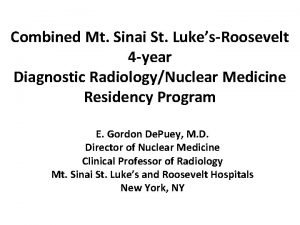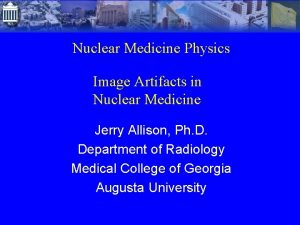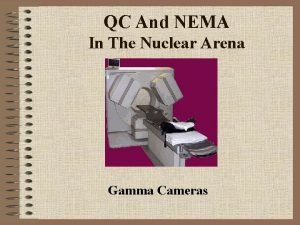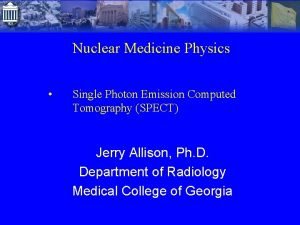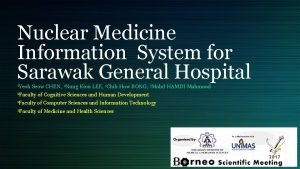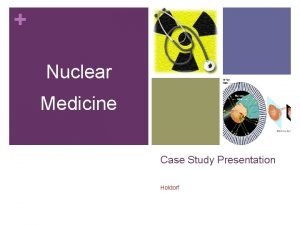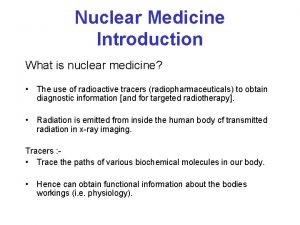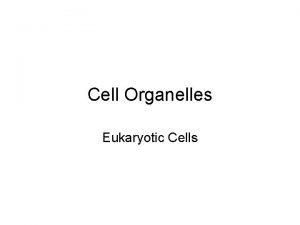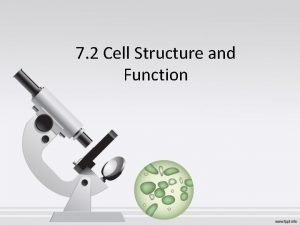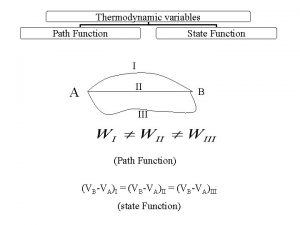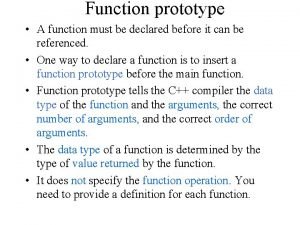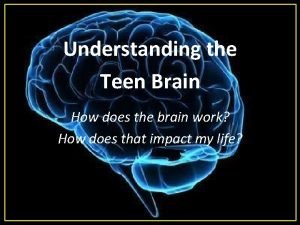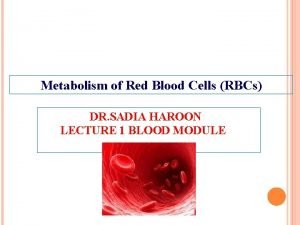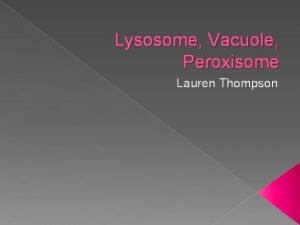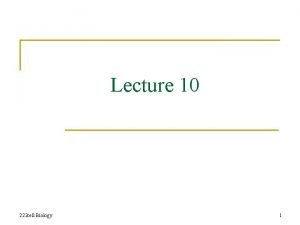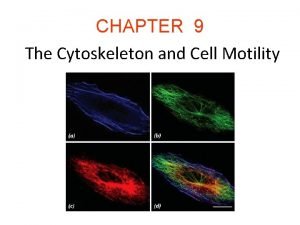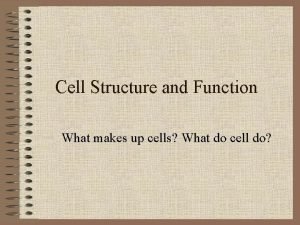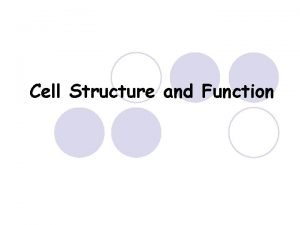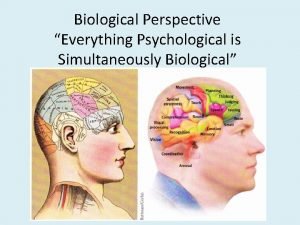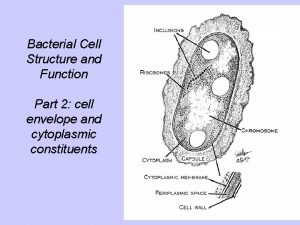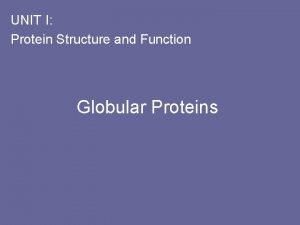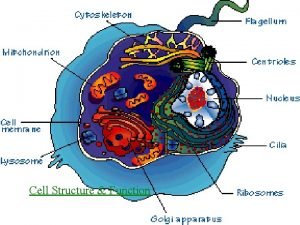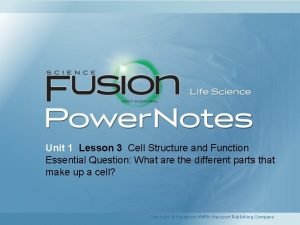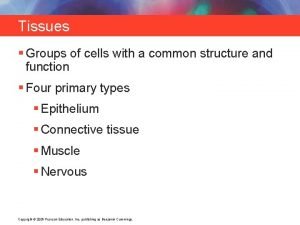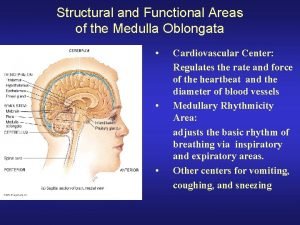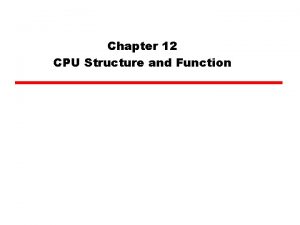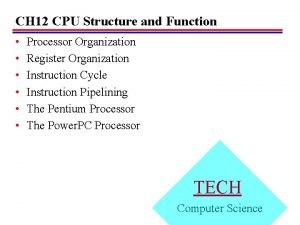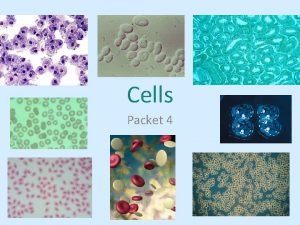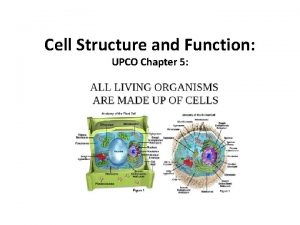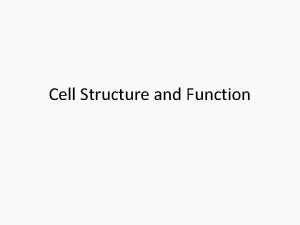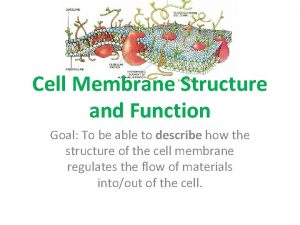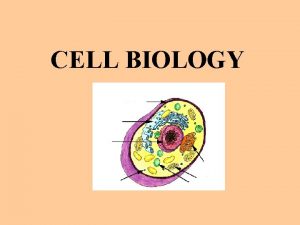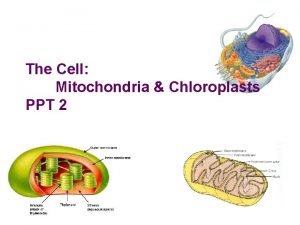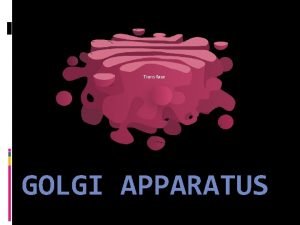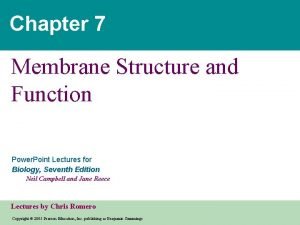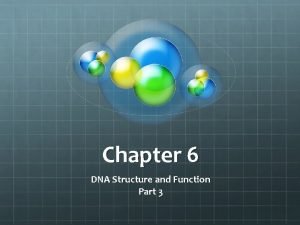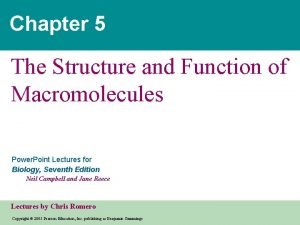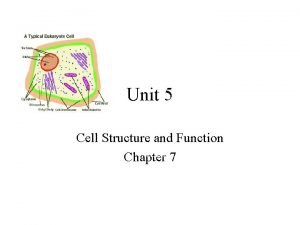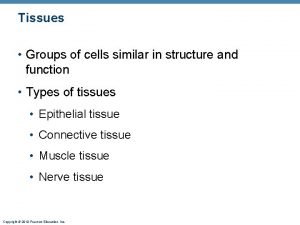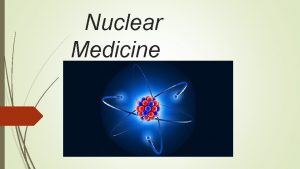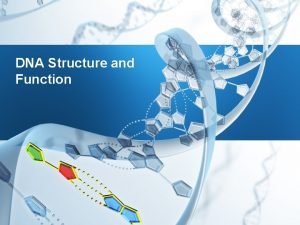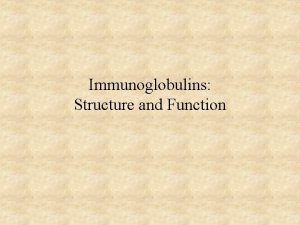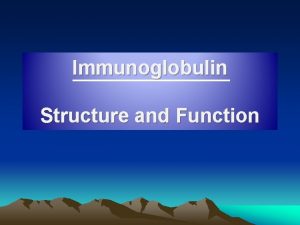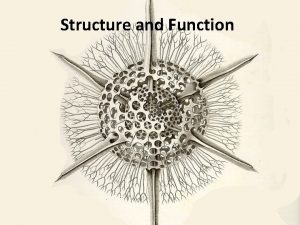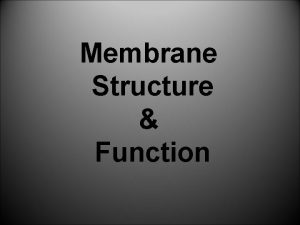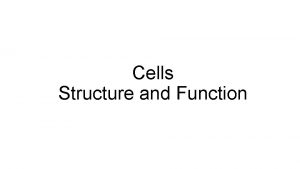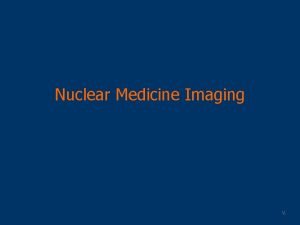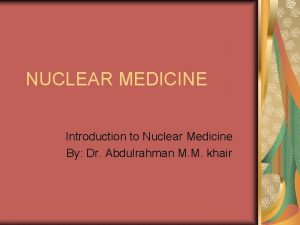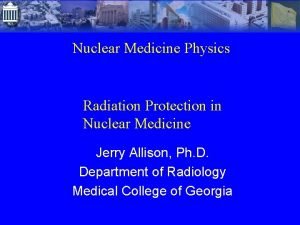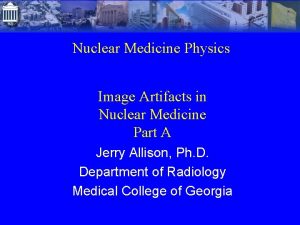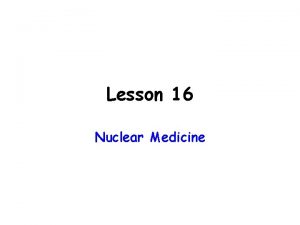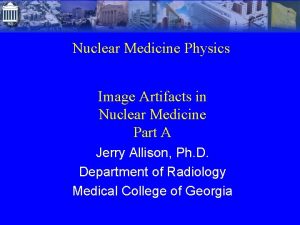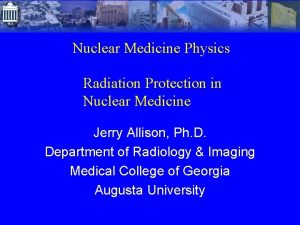Function and Structure in Nuclear Medicine Nuclear Medicine

































































- Slides: 65

Function and Structure in Nuclear Medicine

Nuclear Medicine • Radioactive material is administered into the patient body • Photons emitted in the patients are detected by a scintillator • Distribution of the radioactivity in the patient body is reconstructed from projections

Radioactivity Maria Składowska-Curie (1867 -1934)

Radioactivity Process that involves the nucleus

Radioactivity Energy state of nucleus changes

Radioactivity Decay scheme diagram for 14 C Transition energy • Numbers of protons and neutrons change • b- particle is emitted

Radioactivity Decay scheme diagram for 14 C is not good for imaging because the decay does not produce photons

Nuclear Medicine • Radioactive material that emits photons is administered into the patient body • Photons coming in the patients are detected by a scintillator • Distribution of the radioactivity in the patient body is reconstructed from projections

Radioactivity Decay scheme diagram for 14 C not only does not produce useful photons but also its half-life is 5730 years

Nuclear Medicine • Radioactive material with half-life in order of few hours that emits photons is administered into the patient body • Photons coming in the patients are detected by a scintillator • Distribution of the radioactivity in the patient body is reconstructed from projections

Decay scheme diagram for 133 Xe

Decay scheme diagram for 133 Xe Half-life 5. 2 days

What about positron emitters ?

Decay scheme diagram for 18 F



Nuclear Medicine • Radioactive material with half-life in order of few hours that emits gamma photons is administered into the patient body • Photons coming in the patients are detected by a scintillator • Distribution of the radioactivity in the patient body is reconstructed from projections

Detection • Photon energy cannot be too high because photons would have too high penetration • Hard to detect • Safety issues • Photon energy cannot be too low because photons would have too low penetration

Nuclear Medicine • Radioactive material with half-life in order of few hours that emits gamma photons is administered into the patient body • Photons with energies ranging from 50 ke. V to 600 ke. V coming in the patients are detected by a scintillator • Distribution of the radioactivity in the patient body is reconstructed from projections

Gas Filled Detectors

Solid State Detectors

Scintillation Detectors Nuclear Medicine uses scintillation detectors Interaction of a gamma photon with the crystal produces visible light (several hundred photons)

Crystals Commonly used in NM

Scintillation Detectors

Direction of incoming photon Photomultiplier tubes Crystal

Direction of incoming photon Photomultiplier tubes Crystal Lead collimator

Direction of incoming photon Photomultiplier tubes Crystal Lead collimator The ambiguity is resolved by performing tomography i. e. rotating detector around patient

Single Photon Emission Tomography

Single Photon Emission Computed Tomography SPECT Typically: • 60 projections are acquired around patient over at least 180° • It takes 1 minute per projection to acquire enough photon counts

2 detector camera

3 detector camera

SPECT is not a very efficient technique

SPECT is not a very efficient technique • Only 1 in every 10, 000 gamma photons is detected • Resolution is only about 1 cm

Positron Emission Tomography (PET)

SPECT PET

PET


PET SPECT

Examples of NM images SPECT Cardiac Imaging • Perfusion • Viability

Cardiac SPECT

Cardiac SPECT

Brain SPECT primary photon (collimator response) scattered photon (scatter and collimator response ) absorbed photon (absorption)

Brain SPECT primary photon (collimator response) scattered photon (scatter and collimator response ) absorbed photon (absorption)

Brain SPECT

Brain SPECT Frontal Lobe Dementia

Oncology PET – 18 FDG 57 years old male, Lung Nodule D 1 cm Hypermetabolic nodule : cancer No adenopathy, no metastasis : possible surgery FDG : 15 m. Ci ; 15 min

Oncology PET – 18 FDG 57 years old male, lung cancer Ganglionary hepatic and bony metastases FDG : 5 m. Ci ; 7 x 7, 5 min

Oncology PET – 18 FDG 68 year old male, pancreatic cancer and melanoma Ganglion, bone and diffuse metastases FDG : 10 m. Ci ; 13 min


Is there an ideal Nuclear Medicine camera ?

Is there an ideal Nuclear Medicine camera ? • Electronic collimation • Single photon emitter

Is there an ideal Nuclear Medicine camera ? • Electronic collimation • Single photon emitter Yes, there is


Compton Camera

Physics 101 -Compton Scattering

Physics 101 -Compton Scattering

Gamma photon is scattered and deposits energy E Scattered gamma photon is detected






Challenges still to overcome • Detector 1 need to have VERY good energy resolution Solid state (semiconductor) detectors need to be used

Challenges still to overcome • In order to reconstruct the distribution of radioactivity from “Compton cones” HUGE inverse problem needs to be solved

 Lesson 15 nuclear quest nuclear reactions
Lesson 15 nuclear quest nuclear reactions Fisión nuclear vs fision nuclear
Fisión nuclear vs fision nuclear Venus in medical terms
Venus in medical terms Mt sinai nuclear medicine
Mt sinai nuclear medicine Diaphragm
Diaphragm Nuclear medicine lectures
Nuclear medicine lectures Measles artifact nuclear medicine
Measles artifact nuclear medicine Filtered back projection
Filtered back projection Nuclear medicine information system
Nuclear medicine information system Case study conclusion
Case study conclusion Spatial resolution
Spatial resolution Smooth er function
Smooth er function E.r function
E.r function School structure definition
School structure definition State vs path function
State vs path function One one and onto function
One one and onto function What is function prototype
What is function prototype Brain structure and function
Brain structure and function Draw a seed and identify each part
Draw a seed and identify each part Chloroplast function
Chloroplast function Anaerobic glycolysis in red blood cells
Anaerobic glycolysis in red blood cells What is the function of lysosomes
What is the function of lysosomes Protist structure and function
Protist structure and function Biology
Biology Fern function
Fern function Structure and function of cytoskeleton
Structure and function of cytoskeleton Breast structure and function
Breast structure and function Chapter 10 body structure and function
Chapter 10 body structure and function Cilia function
Cilia function Structure of a animal cell
Structure of a animal cell What is the function of smooth endoplasmic reticulum
What is the function of smooth endoplasmic reticulum Function of amygdala in limbic system
Function of amygdala in limbic system Biological perspective drawing
Biological perspective drawing Bacterial cell structure and function
Bacterial cell structure and function Function of haemoglobin
Function of haemoglobin Chapter 7 section 4 cellular transport
Chapter 7 section 4 cellular transport Fungi structure and function
Fungi structure and function Lesson 3 cell structure and function answer key
Lesson 3 cell structure and function answer key Structure and function
Structure and function Cell organelle graphic organizer answer key
Cell organelle graphic organizer answer key Cell
Cell Groups of cells with a common structure and function.
Groups of cells with a common structure and function. Medulla structure and function
Medulla structure and function Biology chapter 7 cell structure and function
Biology chapter 7 cell structure and function Chapter 22 plant structure and function answer key
Chapter 22 plant structure and function answer key Unifying concepts of animal structure and function
Unifying concepts of animal structure and function Cpu structure and function
Cpu structure and function Cpu structure and function
Cpu structure and function Membrane structure packet
Membrane structure packet Chapter 7 cell structure and function section review 7-2
Chapter 7 cell structure and function section review 7-2 Cell structure and function graphic organizer
Cell structure and function graphic organizer Chapter 5 cell structure and function
Chapter 5 cell structure and function Cells in biology
Cells in biology Characteristics of cell membrane
Characteristics of cell membrane Plastids in plant cell
Plastids in plant cell Respiration mitochondria
Respiration mitochondria What is endosperm
What is endosperm Stomata in leaves
Stomata in leaves Golgi apparatus outline
Golgi apparatus outline Rose structure and function
Rose structure and function Chapter 7 membrane structure and function
Chapter 7 membrane structure and function Structure and function
Structure and function Chapter 5 the structure and function of macromolecules
Chapter 5 the structure and function of macromolecules Structure and function of invertebrates
Structure and function of invertebrates Unit 5 cell structure and function answer key
Unit 5 cell structure and function answer key Groups of cells that are similar in structure and function
Groups of cells that are similar in structure and function



